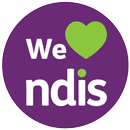Introduction
People with a cognitive disability are more likely to experience epilepsy.
Our organisation is committed to managing epilepsy in a wholistic way that considers each participant’s needs and preferences.
Applicability
- Applies when supporting participants with epilepsy
- Applies to all key management personnel and workers supporting participants with epilepsy
Understanding seizures
Seizures can occur when provoked or unprovoked. The three main types of epileptic seizures include:
- focal onset
- generalised onset and;
- unknown onset.
Signs of a seizure can include one or more of the following:
- the person’s body stiffening and falling to the ground, followed by strong, symmetrical, rhythmic movements (tonic-clonic)
- loss or disturbance of awareness (‘absence’, blackout spells), blank stare
- feelings of déjà vu or an unpleasant smell or taste
- confusion, disorientation
- a fall, sometimes with no memory of the fall
- involuntary movement—twitching or abnormal sensory disturbance of limb/s or loss of consciousness
- automatisms—repetitive, automatic trance-like movements e.g. fiddling with clothes, repeated use of strange words or repeated swallowing
- sleep disturbances, restlessness, inability to maintain a regular REM sleeping pattern
- loss of bladder or bowel control.
We will ensure that each worker is appropriately trained in recognising and responding to seizures.
Risk Management
An important part of supporting a person with epilepsy is understanding the associated risks and putting in place appropriate risk management strategies to ensure the person is fully supported.
We will have a robust risk management system in place that includes records of risk management and mitigation strategies relating to epilepsy.
While the health and safety of participants with epilepsy is paramount, any attempt to reduce risk must avoid, where possible, compromising the participant’s safety and dignity or impair their quality of life.
Common risks associated with epilepsy include:
- falls
- burn-related injuries
- aggression or agitation
- risk of drowning
- prolonged seizure
- increased chance of sudden unexpected death
Epilepsy management plan
Each participant with epilepsy requires an individually developed epilepsy management plan. Each plan must be developed in consultation with:
- the participant
- their person responsible or guardian
- relevant workers, and;
- the participant’s external healthcare providers
A documented epilepsy management plan, must include, at a minimum:
- a description of a person’s seizures, including triggers for seizures
- a risk management plan for each participant
- medication and information about existing epilepsy supports
- a seizure record chart
- action plan for responding seizures
- support requirements following a seizure
- a record of the participant’s needs and preferences.
Each plan must be reviewed at least annually, and more often if the participant’s support needs change or if a review is required for any other reason.
Water safety for participants with epilepsy
When supporting participants with epilepsy to swim in community pools or at patrolled beaches:
- two workers (that are strong swimmers) must accompany the participant
- one worker must be in the water and remain within arm’s length of the participant
- attendants or lifeguards should be notified of potential risk of seizures.
When participating in water sports, workers must ensure that:
- they are aware of the participant’s specific conditions and can undertake first aid if required
- the participant does not swim alone
- the participant is not feeling unusually tired
- the participant wears a buoyant safety swimming vest and a brightly top/ swimming cap.
Dwellings for participants with epilepsy
Dwellings for participants with epilepsy may require additional safety measures. This may include:
- temperature controls on hot water systems
- sliding doors for toilets, or a door that opens outwards or can be unlocked from the outside
- shower recesses with no sharp edges
- showers that have block-proof drains
- wall-mounted fans and heaters or central heating/cooling instead of free-standing fans and heaters
- non-breakable crockery and cordless appliances with automatic switch off functions
- an epilepsy safety poster displayed in the bathroom
- baths with automatic plugs or chain plugs so the plug can be removed quickly in the event of an emergency
- furniture that does not have sharp or pointed edges.
Responsibilities for key management personnel
When supporting participants with epilepsy, key management personnel must:
- ensure all workers are trained to support participants with epilepsy including:
- understanding and managing epilepsy
- seizure first aid
- administration of emergency medication, where prescribed
- ensure each participant has an individually developed epilepsy management plan
- ensure each participant has a regular risk assessment
- ensure participant epilepsy management plans are reviewed annually or more frequently if there are changes to the participant’s condition
- periodically audit epilepsy management practices.
Epilepsy management responsibilities for workers
When supporting participants with epilepsy, workers must:
- complete epilepsy education and training as directed by key management personnel
- know and understand duty of care and dignity of risk issues for participants with epilepsy
- be familiar with and follow a participant’s epilepsy management plan when providing supports
- involve each participant in decision making about their care and treatment
- when required, monitor and supervise participants with epilepsy in a manner which is discreet as possible, minimises disturbances and promotes health and safety
- follow the recommendations of health care providers
- be alert when supporting participants with epilepsy to participate in water activities
- supervise participants with epilepsy when preparing meals, particularly when using knives and sharps
- know how to appropriately respond to a convulsive seizure
- record seizure activities of participants on a participant’s seizure chart
- administer emergency medication where required
- notify key management personnel and the participant’s doctor if a participant experiences atypical (unusual) seizures
- monitor participants with epilepsy at night, if recommended by a medical practitioner.



